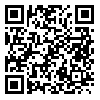Volume 21, Issue 6 (June 2021)
Modares Mechanical Engineering 2021, 21(6): 415-428 |
Back to browse issues page
Download citation:
BibTeX | RIS | EndNote | Medlars | ProCite | Reference Manager | RefWorks
Send citation to:



BibTeX | RIS | EndNote | Medlars | ProCite | Reference Manager | RefWorks
Send citation to:
Mozaffari I, amini S. Effect of Cryogenic Machining(turning) of AISI 440C Stainless Steel on Roughness, Hardness, Chip Morphology and Tool Wear Pattern. Modares Mechanical Engineering 2021; 21 (6) :415-428
URL: http://mme.modares.ac.ir/article-15-44921-en.html
URL: http://mme.modares.ac.ir/article-15-44921-en.html
1- University Of Kashan
2- University Of Kashan , amini.s@kashanu.ac.ir
2- University Of Kashan , amini.s@kashanu.ac.ir
Abstract: (1704 Views)
The high amount of nitrogen in the composition of AISI 440C stainless steel reduces the machinability of this steel due to the increase in hardness and generates high heat at the cutting edge and the chip-tool contact area. The use of new cooling technologies such as cryogenic machining using liquid nitrogen LN2, leads to increase the life of the tool and improve the cutting speed compared to other common methods. In this research, the effect of cryogenic machining is investigated on roughness and hardness of AISI 440C stainless steel. The results showed that using cryogenic machining, the surface roughness of AISI 440C stainless steel was significantly reduced even at high feed rate. The morphology of the chips showed that with the use of cryogenic machining, the surface burn and the accumulation of materials on the inner surface of the chips has been significantly reduced. In this study, it was found that in cryogenic machining, the tool wear pattern is the erosion pit on the chip surface and has increased the tool life by 400% compared to the dry machining.
Keywords: Cryogenic Machining, Liquid Nitrogen, AISI 440C Stainless Steel, Roughness, Hardness, Tool Wear
Article Type: Original Research |
Subject:
Machining
Received: 2020/08/3 | Accepted: 2020/12/19 | Published: 2021/05/31
Received: 2020/08/3 | Accepted: 2020/12/19 | Published: 2021/05/31
Send email to the article author
| Rights and permissions | |
 |
This work is licensed under a Creative Commons Attribution-NonCommercial 4.0 International License. |







